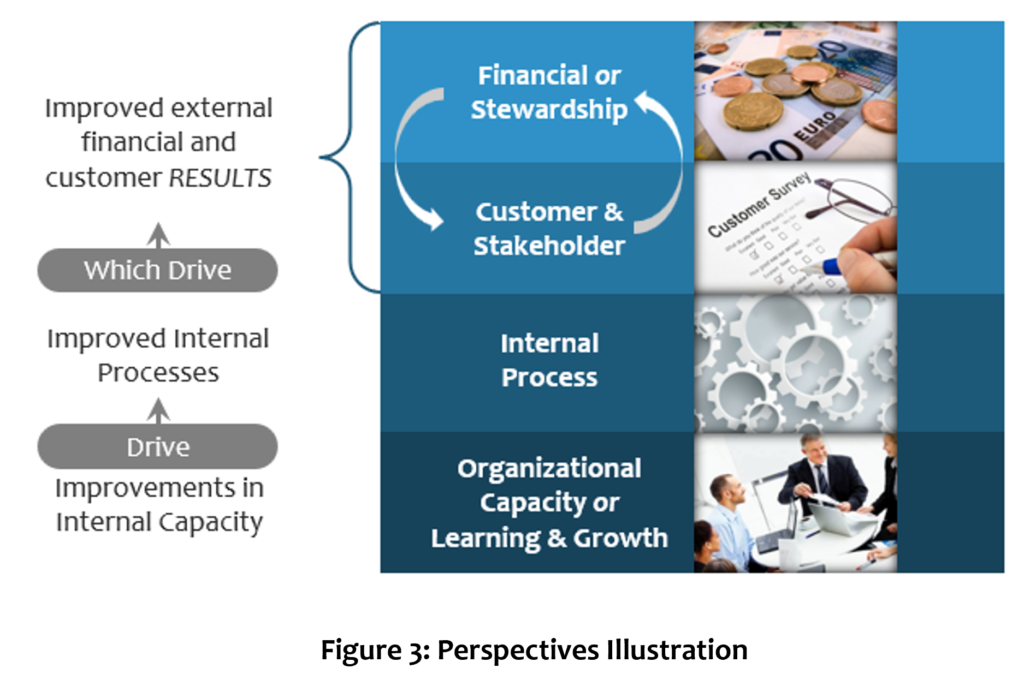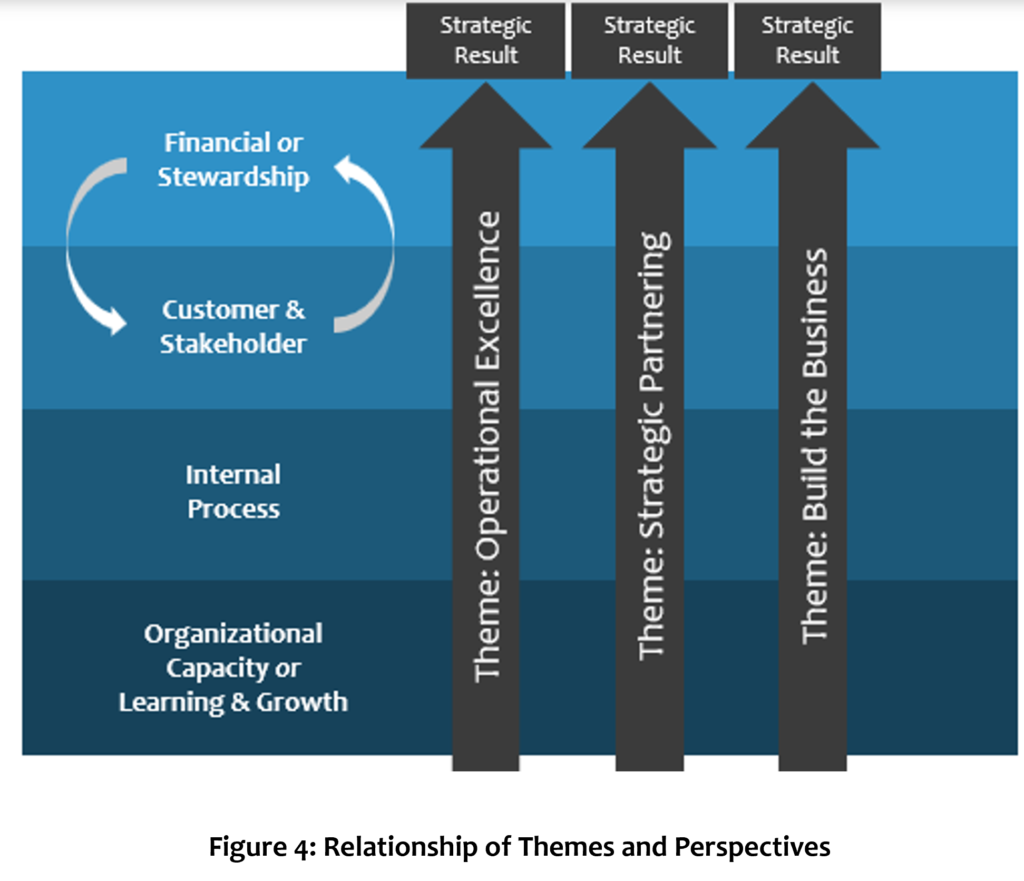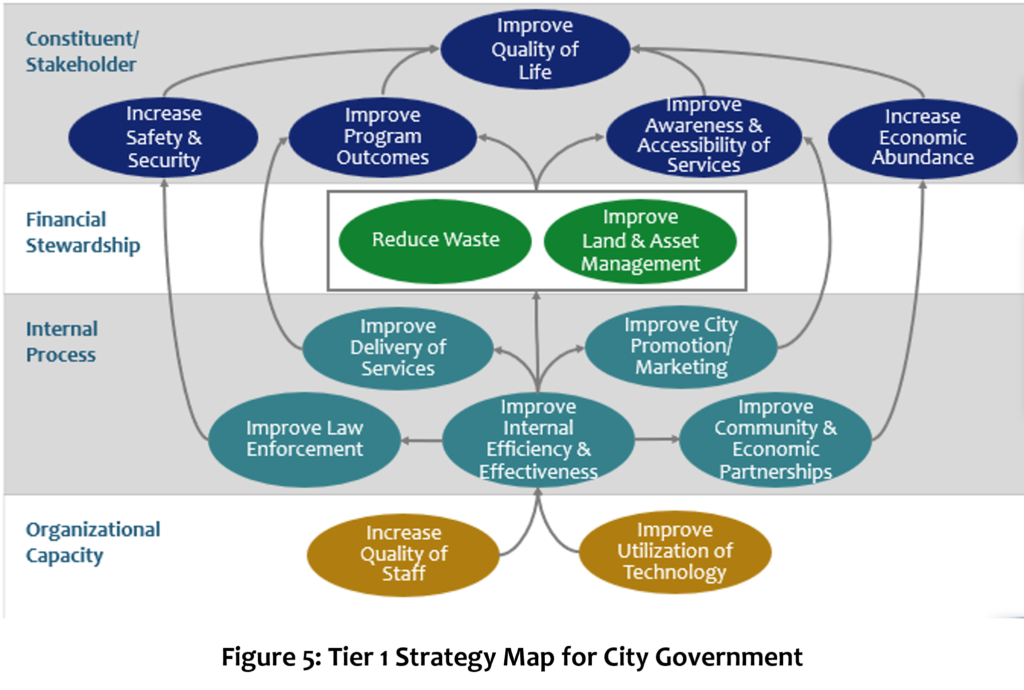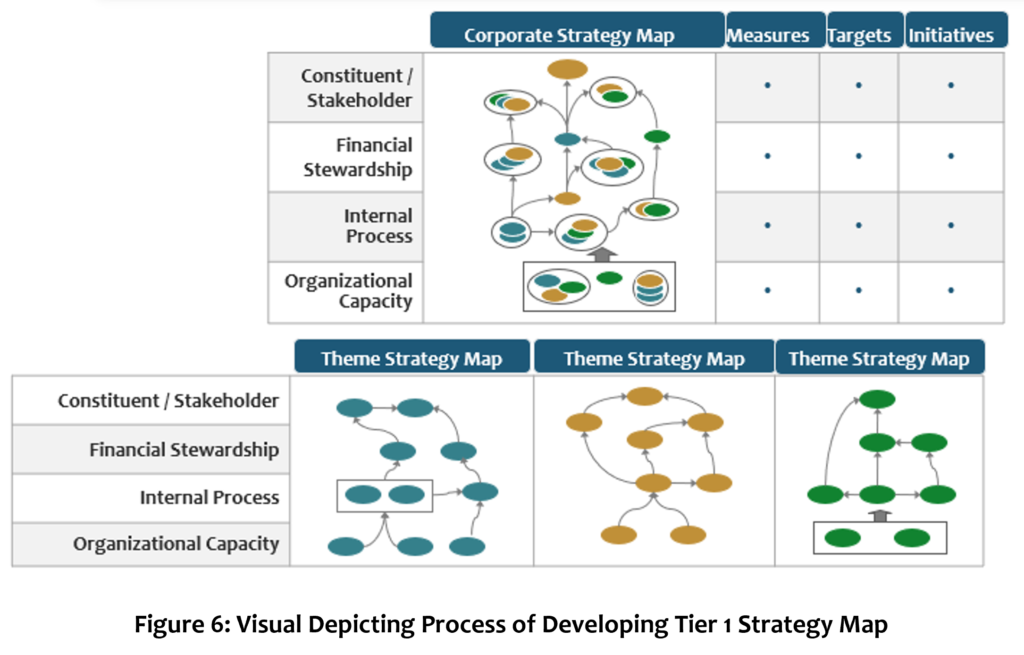 The “Lions and tigers and bears, oh my!!” cliché from Wizard of Oz is commonly repurposed to express awe, apprehension, or fear. In our strategy courses, that apprehension is often expressed as “Themes and Perspectives and Maps, oh my!”
The “Lions and tigers and bears, oh my!!” cliché from Wizard of Oz is commonly repurposed to express awe, apprehension, or fear. In our strategy courses, that apprehension is often expressed as “Themes and Perspectives and Maps, oh my!”
Over the years, we have seen many clients, as well as students, struggle with the concepts of these three terms. This can cause apprehension and cast doubts about whether they are correctly incorporating these concepts, most notably utilized in the Balanced Scorecard (BSC) methodology, in developing their strategy. Let’s take a few moments and examine each of these and how they relate to each other as fundamental components of a successful BSC system.
Let’s start with the one we encounter first in developing a strategy, Themes (Strategic Themes). Themes can be thought of as the three or four main focal points for an organization that are built upon the customer value proposition and include a direct nexus to the elements of the organization’s mission and vision. Also considered as part of the Theme development process would be the results of an organization’s SWOT (Strength, Weakness, Opportunities & Threats) analysis, Scenario Planning analysis, Foresight analysis, STEEPLE (Sociological, Technological, Environmental, Economical, Legal & Ethical) analysis or other tools used to determine those high-level elements that directly influence and help us understand the foundations of the organizational strategy. The Theme is for defining the organization’s high-level business strategy and break the vision and mission into action enabling the organization to focus its energy on the desired strategic results or outcomes.
To develop Themes, you gather work from the high-level strategic elements of an organization. It is important to note, not everything developed when utilizing the various tools listed above, but rather those things determined to be most significant to the organization’s success. These various elements are then grouped based on what seems logical as shown in Figure 1 below. Once all the elements are grouped, the discussion of what to call each grouping occurs.
Various Strategic Elements Work Together as a Theme

For each Theme, there is one strategic result or end outcome tied to the successful execution of the organization’s strategy. In Figure 2, we have listed three Themes with strategic results for a national weather organization as an example.

 The next term in our content that creates apprehension is Perspectives. A Perspective is a particular “lens” through which we view organizational performance. Four basic perspectives are traditionally used to encompass an organization’s activities: Financial, Customer/Stakeholder, Internal Process and Organizational Capacity. Organizations will sometimes change these names to better align with the organizational vernacular to better relate with employees, customers and stakeholders. While the name may change, the focus of each Perspective does not.
The next term in our content that creates apprehension is Perspectives. A Perspective is a particular “lens” through which we view organizational performance. Four basic perspectives are traditionally used to encompass an organization’s activities: Financial, Customer/Stakeholder, Internal Process and Organizational Capacity. Organizations will sometimes change these names to better align with the organizational vernacular to better relate with employees, customers and stakeholders. While the name may change, the focus of each Perspective does not.
For organizations in the private sector, the perspectives are ordered (top-to-bottom): Financial – Customer/Stakeholder – Internal Process – Organizational Capacity. Organizations in the public sector to include government make a slight modification as the top two perspectives, Financial and Customer/Stakeholder change their order to put the Customer/Stakeholder at the top position as these types of organizations are typically more “mission-focused.” This is illustrated in Figure 3.
 The relationship between the Themes and Perspectives is illustrated in Figure 4. Simply stated, the Theme must be broad enough in context to extend through all four Perspectives. Where organizations run into trouble is when the Theme name is too similar to one of the Perspective names. When this occurs, it generally causes issues in mapping the strategy.
The relationship between the Themes and Perspectives is illustrated in Figure 4. Simply stated, the Theme must be broad enough in context to extend through all four Perspectives. Where organizations run into trouble is when the Theme name is too similar to one of the Perspective names. When this occurs, it generally causes issues in mapping the strategy.
As an example, it would not be advisable to have a Theme entitled “Finance” or “Learning & Growth” as these would be too narrow in scope and most likely could be addressed within the listed Perspectives. Some examples of Theme names would include: Operational Excellence, Innovation Excellence, Customer Intimacy, Build the Business, Good Governance, Service Excellence, Excellence in Learning, and Accountability to name a few.
This brings us to Strategy Maps. Strategy Mapping was introduced into the BSC framework in 2000 by Robert S. Kaplan and David P. Norton. It was quickly adopted into the Balanced Scorecard Institute’s Nine Steps to Success™.
 A Strategy Map (Figure 5) is a visual representation of an organization’s strategy displaying the prominent relationships between strategic objectives found in each of the four perspectives. In other words, it shows a logical cause-and-effect connection between these objectives. Strategy Maps build value from the Organizational Capacity level of an organization by driving Improved Internal Process, which in turn drives Improved Financial and Customer Results.
A Strategy Map (Figure 5) is a visual representation of an organization’s strategy displaying the prominent relationships between strategic objectives found in each of the four perspectives. In other words, it shows a logical cause-and-effect connection between these objectives. Strategy Maps build value from the Organizational Capacity level of an organization by driving Improved Internal Process, which in turn drives Improved Financial and Customer Results.
As studies tell us roughly 65% of the general population are visual learners, a Strategy Maps provide an effective method to tell the story of an organization’s strategy in such a way that it is memorable and meaningful. It is one of the most powerful elements in the BSC methodology, as it allows an organization to quickly communicate how value is created by the organization.
In building a Strategy Map for an organization at the corporate, or “Tier 1” level, each Theme is first mapped utilizing what objectives must be accomplished in order for the organization to be successful in achieving the strategic results of that Theme. Once these objectives are agreed upon, they are then mapped across the four Perspectives showing the logical cause-and-effect linkages previously indicated.

Once all Themes have been mapped, they are then consolidated into a single “Tier 1 (Corporate)” Strategy Map (Figure 6) which results in the culmination of the visual “pictation” of the organization’s strategy. The next steps involve developing definitions for each objective based on all the previous work, intended results (outcomes), performance measures and initiatives, but those topics are for another time.
If you’d like to better understand how these terms are incorporated into a coherent strategy, please consider our Balanced Scorecard Professional Certification Program or contact us directly.
Terry is Balanced Scorecard Institute's Director of Training and Senior Associate with over 30 years of experience working in both the private and public sectors.

